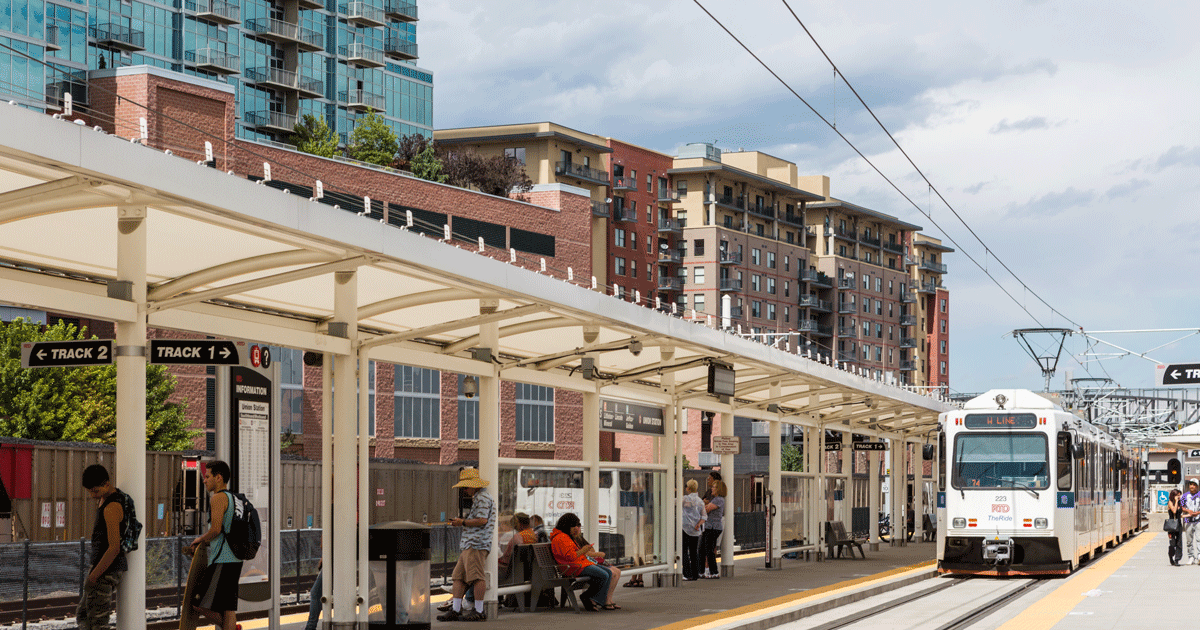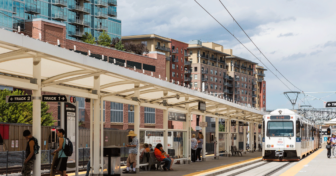One can make a strong argument that Denver is the American region that has understood best the new reality that talent attracts capital. And because it has Denver is one of the regions best positioned to win economically in the 21st Century.
In 2007 the Downtown Denver Partnership published its strategic vision, designed to make “Downtown Denver one of the most livable places in the world”. The plans authors wrote:
To achieve a vibrant, economically healthy, growing and vital downtown, Denver must be committed to a sustained effort in each of the elements: Prosperous, Walkable, Diverse, Distinctive and Green. The strategies and projects in each category are critical for Downtown Denver to remain competitive within regional, state, national and international markets.
The plan details seven transformational strategies and projects:
- Energizing the commercial core — Enhance the pedestrian and transit experience in the commercial core to bolster economic development opportunities.
- Building on transit — Couple the regional transit network with an equally ambitious local system that provides quick and efficient connections.
- Creating grand boulevards — Transform our major thoroughfares into celebrated, multi-modal boulevards as a compliment o Denver’s parkway system.
- Embracing adjacent neighborhoods — Link center city neighborhoods together and more closely with the downtown core.
- Connecting Auraria — Foster expanded physical and programmatic connections between the Auraria Campus and the rest of downtown.
- Downtown’s new neighborhood Arapahoe Square — Redevelop Arapahoe Square as a cutting-edge, densely populated, mixed-use area and center of innovative business.
- A rejuvenated Civic Center — Restore and reactivate Civic Center to attract more visitors, residents, workers and students to the park.
Talk about ahead of their time! In 2007 (not to mention now more than a decade later) most every region in America was pursuing an economic development strategy based on retaining and attracting business investment and in their downtown doing big projects like stadiums, convention centers and casinos. Making prosperous, walkable, diverse, distinctive and green the core of your economic development strategy was unheard of. As was a to do list centered on creating downtown Denver, first and foremost, as a place where people want to live, play and work.
As we explored in a 2012 post, Denver knew what they were doing and why. We wrote:
One city – and region – that gets that attracting talent is central to prosperity and is reaping its benefits is Denver. Tami Door, CEO of the Downtown Denver Partnership, in a must read Denver Post guest column, writes:
“Before moving or opening an office, companies strongly consider the workforce available in a particular place. Employers will follow the workforce. For a city to remain economically competitive in the future, it must attract the millennial generation, the future workforce.
… Nationally, employers recognize that the millennial generation is more likely to choose to live and work in or near an urban center. Mountains and oceans have become secondary to downtown amenities.
… Employers in Denver tell us that during the interview process, candidates are asking questions beyond benefits and salary. They ask about the vitality of the city center, culture and amenities, if an area is walkable or if there are continuous bike lanes and paths to get them between home and work.”
Door writes that Denver has made its priorities “amenities, transportation infrastructure, educated population, residential growth, innovation and entrepreneurship, and emerging green economy — that make the urban core of the Mile High City an attractive place for these younger workers.”
Clearly that strategy has worked. The Partnership’s pre-pandemic 2020 State of Downtown Denver reports that “over the last 10 years, Downtown Denver has experienced a historic development cycle, adding over 4 million square feet of office, over 10,000 residential units, and over 3,500 hotel rooms. Investors continue to see the Downtown Denver opportunity, with 26 development projects under construction or planned – adding up to roughly 1.3 million square feet of office, 1,500 residential units, and 1,000 hotel rooms in the pipeline.”
This is what winning economically in the 21st Century looks like.
Denver, of course, is one of America’s high-growth regions. At the core of their success is that they are a talent magnet. One of the places that talent is flocking to from around the country. Denver leaders understand the 21st Century economic development reality that quality of place attracts talent, and talent = economic growth.
Concentrated talent is what attracts high-wage employers. Talent is also entrepreneurial, so where it is concentrated are the places with the most high-wage business start-ups. So talent concentration is essential to high-wage job creation.
Where you have concentrations of high-wage workers you get increased demand for local services. Their spending power ripples through the region’s economy via increased demand for retail, hospitality, construction and other locally provided goods and services.
Michigan, of course, is a talent attraction laggard. And we are paying a price for being a laggard. The lack of talent and transit is what Amazon cited in explaining why neither metro Grand Rapids or metro Detroit made their final twenty regions to be considered for their 50,000 high-paid jobs HQ2.
If Michigan is going to be competitive in retaining, attracting and creating high-paid 21st Century jobs it is going to require our making public investments in creating places where talent wants to live and work. The economic policy priority for a high-prosperity Michigan is to prepare, retain and attract talent. Talent is the asset that mattered most to high-wage employers.
So understanding the characteristics of where mobile talent is concentrating has become an imperative. Then New York City Mayor Michael Bloomberg, in a 2012 Financial Times column, describes where talent is concentrating:
The most creative individuals want to live in places that protect personal freedoms, prize diversity and offer an abundance of cultural opportunities. … Recent college graduates are flocking to Brooklyn not merely because of employment opportunities, but because it is where some of the most exciting things in the world are happening–in music, art, design, food, shops, technology and green industry. Economists may not say it this way but the truth of the matter is: being cool counts. When people can find inspiration in a community that also offers great parks, safe streets and extensive mass transit, they vote with their feet.
We know how to create welcoming communities. We know how to pay for and provide high quality basic services, infrastructure and amenities. We know how to create high-density, high-amenity, transit-rich neighborhoods. What is missing is an understanding that as Bloomberg put it “talent attracts capital far more effectively and consistently than capital attracts talent”. That the path to prosperity for communities is human-capital driven. That the asset that matters most to employers is talent.
Michigan needs to completely redesign its economic development strategy and practice. We need to understand that the business friendly agenda––primarily from the right––and the support industries and entrepreneurs strategy––primarily from the left––that have been at the core of Michigan’s approach to economic development are at best the icing on the cake.
What Michigan needs, first and foremost, is a human capital centered economic strategy not a business creation, retention, attraction centered economic strategy. The economic development foundation now is high-quality education systems that prepares the next generation for the economy they are going to live in and communities where mobile talent wants to live and work. As Denver teaches us these are the actions that are what positions you to win in the 21st Century.







